
 |
Two distinctive Computer Based Learning (CBL) projects in the Schools of Occupational Therapy and Physiotherapy at Curtin University are investigating the needs of individuals during navigation through interactive multimedia learning materials. The first of these projects is a multimedia database of recreational activities and the other the development of a Student Operated Computer Controlled Educational Resource (SOCCER) in a Computer Managed Learning Environment (CMLE). This project was funded by a grant from the Committee for the Advancement of University Teaching (CAUT) to improve the effectiveness of user interactions in a multimedia environment. Research has shown that computer managed learning can be most effective when it provides pathways and freedom of choice for to meet the needs of learners. In this study, learners were provided with freedom of access to quality assured software and tests to explore their level of competence in discrete areas of the body of knowledge in the CMLE. The activities of learners and pathways selected by them were audited to provide research data for further consideration. In this way, learners are empowered to become self paced and self directed to control their rate of progress throughout the body of knowledge dispensed within the CMLE. Interactive Computer Assisted Learning Packages (ICALP), Test and Feedback items are also described, which enable learners to determine their readiness for entry to formal test procedures.
Therefore, these two distinctive CBL projects aim to investigate the needs of learners as they navigate throughout interactive multimedia learning materials. The first of these projects is a database of recreational activities whilst the other outlines the development of pathways to investigate the development of ICALP, Test and Feedback Items, SOCCER and learner reactions to them and the CMLE.
An early observation was that most therapy students to had little previous computer experience which caused anxiety for some when navigating multimedia packages (Plug, 1991). Hooper and Hannafin (1991), and Gaines and Vickers (1988) indicate that some form of overview can assist new users of this technology. With the media options available, imagery (Bower, 1972) and analogy (Sternberg & Nigro, 1983) sequences can be presented to learners in an opening overview to make the presentation of new materials more meaningful.
In a HyperCard prototype of Recreation Perth, two overview sequences were developed and trialled. One was an animated analogy to link the database of a river system and the other a flow chart. Both were produced with narration via Authorware Professional, but, to incorporate colour and animation, they were linked by HyperCard stacks. It was considered that these strategies would provide significant benefits to a user's knowledge of the database's operation and structure and their attitude towards it.
This experiment was applied to 53 new users of the database, one third of whom formed the control group to enter the database without initial exposure to advance organisers, whilst the other two groups opened either onto a river analogy or a flow chart sequence before entering the database. When the results were analysed no significant differences could be found between the control and experimental groups.
Reasons why advanced organisers proved to be of little influence in this study could be related to the effectiveness of the database's design and development. A retrospective study of consultations with students may result in an earlier educational product with little need for advance organisers. The researcher, working on the database design whilst simultaneously developing appropriate advance organisers, could have unwittingly transferred findings from one to the other. Research of the orienting needs of new users of multimedia may have directed attention to minimising potential problems in the database design. This finding is consistent with Mayer (1979), who noted that advance organisers tend to be of least impact when learning materials are well organised and meaningful to the learners.
The above findings support the views of Clark (1983) and Kulik and Kulik (1980) in their review of the comparative effectiveness of various forms of media, including that of computing. These authors believe that there is little comparative difference in learning effectiveness where the same instructor designs all the treatments.
Another possible reason for this pattern of results is that the choice of advance organisers may have conflicted with the semantic processing capabilities of some subjects. The orienting activity may have misled otherwise effective learners by supplying information in conflict with their learning style. These students may have performed better with an alternative advance organiser, or without any orienting activity. For instance, the selection of a flow chart and river network may not have been appropriate for the largely female population. Moir and Jessel (1989) identified a number of research findings which show that females have greater difficulty than mates with nap reading.
The simplicity of the database structure and operations may have allowed the control group to reach the same level of competency as the advance organiser groups within the ten minute time limit. Comparison between groups when given a shorter time limit to explore the database may have exposed these differences. The results of this study indicate that the advance organiser groups accessed more activities, more video sequences, and were more likely to correctly identify and operate buttons. Although none of these results are significant, this may not have been the case if subjects had been given a reduced time to explore the database.
The brief introduction given to all subjects of the basic operations of computers and the purpose of the study may have been sufficient introductory assistance for the study population. The interactive multimedia arrangement of this database, particularly the ability of the user to access attractive colour, stills and moving visuals, may have provided the learner with sufficient incentive for exploration. Whether this interest would be sustained, or lowered, as the novelty effect diminished, could only be assessed by re-tests to detect group differences.
The homogeneous population used in this study poses the question of whether the results would be repeated with other proposed user groups. For instance, when used with people with special needs, advance organisers in a multimedia format may assist some groups to operate the database more successfully. Careful selection of appropriate, meaningful sequences to meet user needs would need to be carefully investigated.
To date, over 260 students have been involved in the research of raw data for entry to Recreation Perth. Their efforts are not only contributing towards the project, but have become a significant part of their assessment in an undergraduate unit. So far information on over 100 recreational activities has been researched and collated. Students are encouraged to contribute to the design and are consulted when significant design decisions are being made.
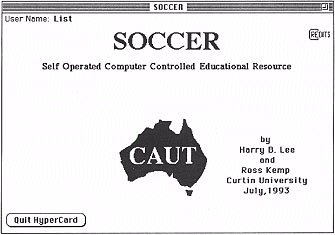
Figure 1: Entry to SOCCER for registration and learning strategies
An abundant supply of passwords is stored in an administration file which is presented at the first time of registration, and noted for use thereafter. Thus, SOCCER provides each learner with permanent registration and opportunities for revision, learning and entry to test and feedback items to verify their status at all levels of entry. Passwords may be retained throughout a whole course of study, or varied daily, according to any need to change.

Figure 2: A second year student view after registration by password
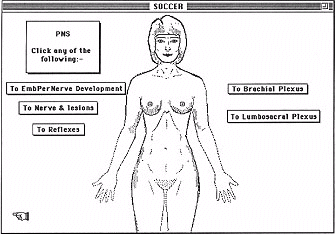
Figure 3: A click on Peripheral Nervous System (Fig 2) takes the learner to this screen.
A further click on Reflexes gives an animated journey to Fig. 4.

Figure 4: Dissolving view of animation (Fig 3) before entry to the ICALP for reflexes.
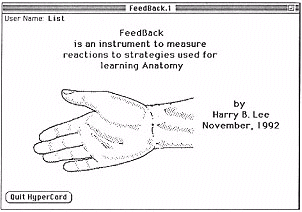
Figure 5: Entry to a Feed Back Instrument (FBI).
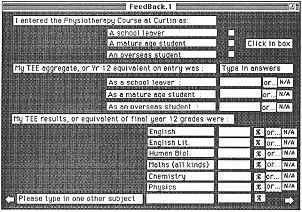
Figure 6: Questions to elicit information about the learner to correlate
2-D cognition with its transfer into a 3-D skill.

Figure 7: Information to correlate learner attitudes with subsequent results.

Figure 8: Questions to elicit information about attitudes and styles of learning.
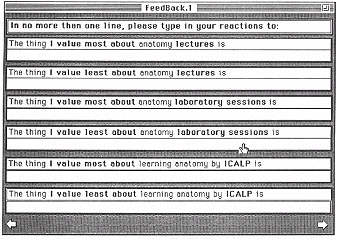
Figure 9: Strategies to gain information about preferred learning situations.
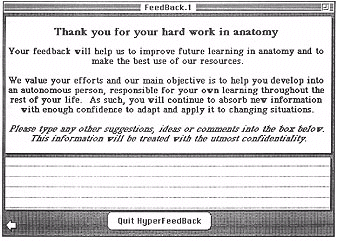
Figure 10: Acknowledgment of the learner which facilitates unexpected inforamtion.
In addition, techniques to empower learners to become self paced and self directed by instant review of accumulated results are described. These methods can be used to record data from test, practice and feedback items to provide quantifiable information for research and to substantiate the administrative and educational effectiveness of a CMLE. In this way, not only can acquired knowledge be assessed and measured, but also the variation of pathways chosen by its users can be tracked for further analysis. Although the style of these projects may appear to be disparate, it is clear that their principles of operation can be applied with confidence for the development of software which not only empowers learners to become fully self directed, but also provides a continuum of data for research purposes.
Bitzer, M. D., (1966). Clinical nursing instruction via PLATO simulated laboratory. Nursing Research, 15(2), 144- 150.
Bower, G. H. (1972). Mental imagery and associative learning. In L. W. Gregg (Ed), Cognition in Learning and Memory. New York: Wiley.
Brookes, R. (1991). The use of recreational activities in occupational therapy: A needs based study for a database. Perth: Curtin University of Technology.
Cameron, D. and Barratt, J. (1992). The new user of interactive multimedia: Can advance organisers help? In Promaco Conventions (Ed.), Proceedings of the International Interactive Multimedia Symposium, 193-206. Perth, Western Australia, 27-31 January. Promaco Conventions. http://www.aset.org.au/confs/iims/1992/cameron.html
Clark, R. E. (1983). Reconsidering research on learning from media. Review of Educational Research, 53(4), 445-458.
Fincher, R. E., Abdulla, A. M., Sridharan, M. R., et al (1988). Computer assisted learning compared to weekly seminars for teaching fundamental electroscreeniography to junior medical students. South Med. J. 81, 1291-1294.
Gaines, B. R., & Vickers, J. N. (1988). Design considerations for hypermedia systems. Microcomputers for Information Management, 5(1), 1-27.
Hannan, T. (1991). Medical informatics: An Australian perspective. Australian & New Zealand Journal of Medicine, 21, 363-378.
Harkin, P. J. R., Dixon, M. F., Reid, W. A. & Bird, C. C. (1986). Computer assisted learning systems in pathology teaching. Medical Teacher, 8(1), 27-33.
Holley, H. S. & Heller, F. N. (1984). Microcomputers for computer assisted instruction in anesthesiology. Journal of Medical Education, 59, 521-522.
Hooper, S. & Hannafin, M. J. (1991). Psychological perspectives on emerging instructional technologies: A Critical Analysis. Educational Psychologist, 26(1), 69-95.
Jones, N. A., Olafson, R. P. & Sutin, J. S. (1978). Evaluation of a gross anatomy program without dissection. Journal of Medical Education, March, 53(3), 198-205.
Kidd, M. R., Hutchings, G. A., Hall, W. & Cesnik, B. (1992). Applying hypermedia to medical education: An author's perspective. In a Technical Report, Department of Electronics and Computer Science, University of Southampton.
Kulik, J. A. & Kulik, C. C. (1980). Effectiveness of computer based college teaching: A meta-analysis of findings. Review of Educational Research, 50(4), 524 - 544.
Lee, H. B. and Allison, G. (1992). A comparative study of the presentation of anatomy by lectures versus ICAL packages to physiotherapy students. In Promaco Conventions (Ed.), Proceedings of the International Interactive Multimedia Symposium, 235-245. Perth, Western Australia, 27-31 January. Promaco Conventions. http://www.aset.org.au/confs/iims/1992/lee-h.html
Lee, H. B. & Allison, G. (1993). Learning anatomy at the tertiary level by computer. Forum 1993.
Levine, R. S., Jones, J. H. & Morgan, C. (1987). Comparison of computer assisted learning with tutorial teaching in a group of first year dental students. Medical Education, 21, 305-309.
Mast, T. A. & Watson, J. J. (1976). Dental learning resources centre. Journal of Dental Education, 40, 797-799.
Mayer, R. E. (1979). Can advance organizers influence meaningful learning. Review of Educational Research, 49(2), 371-383.
McCracken, T. O. & Spurgeon, T. L. (1991). The Versalius Project: Interactive computers in anatomical instruction. Journal of Biocommunications, 18, 40-44.
Moir, A. & Jessel. (1989). Brain sex. London: Mandarin.
Plug, C. (1991). Occupational therapists and computer anxiety: Fact or fiction? Perth: Curtin University of Technology.
Prentice, J. W. & Kenny, G. N. C. (1986). Microcomputers in medical education. Medical Teacher, 8, 9-18.
Shortliffe, E. H. & Perreault, L. E. (1990). Medical informatics: Computer applications in health care. New York: Addison-Wesley.
Sternberg, R. L, & Nigro, G. (1983). Interaction and analogy in the comprehension and appreciation of metaphors. Quarterly Journal of Experimental Psychology, 35A, 17-38.
Starkweather, J. A. (1986). The computer as a tool for learning. Western Journal of Medicine, 145, 864-868.
Walsh, R. J. & Bohn, R. C. (1990). Computer assisted instructions: A role in teaching human gross anatomy. Medical Education, November, 24(6), 499-506.
Wigton, R. S., Poses, R. M., Collins, M. & Cebul, R. D.(1990). Teaching old dogs new tricks: Using cognitive feedback to improve physicians' diagnostic judgements on simulated cases. Academic Medicine, 65(9), Suppl. 5-6.
| Authors: Harry B Lee, Senior Lecturer in Anatomy, School of Physiotherapy, Curtin University. Tel: 09 351 6643 Don Cameron, Lecturer, School of Occupational Therapy, Curtin University. Tel: 09 351 6621 Please cite as: Lee, H. B. and Cameron, D. (1994). Strategies to provide pathways for learners in a computer managed learning environment. In C. McBeath and R. Atkinson (Eds), Proceedings of the Second International Interactive Multimedia Symposium, 273-283. Perth, Western Australia, 23-28 January. Promaco Conventions. http://www.aset.org.au/confs/iims/1994/km/lee2.html |